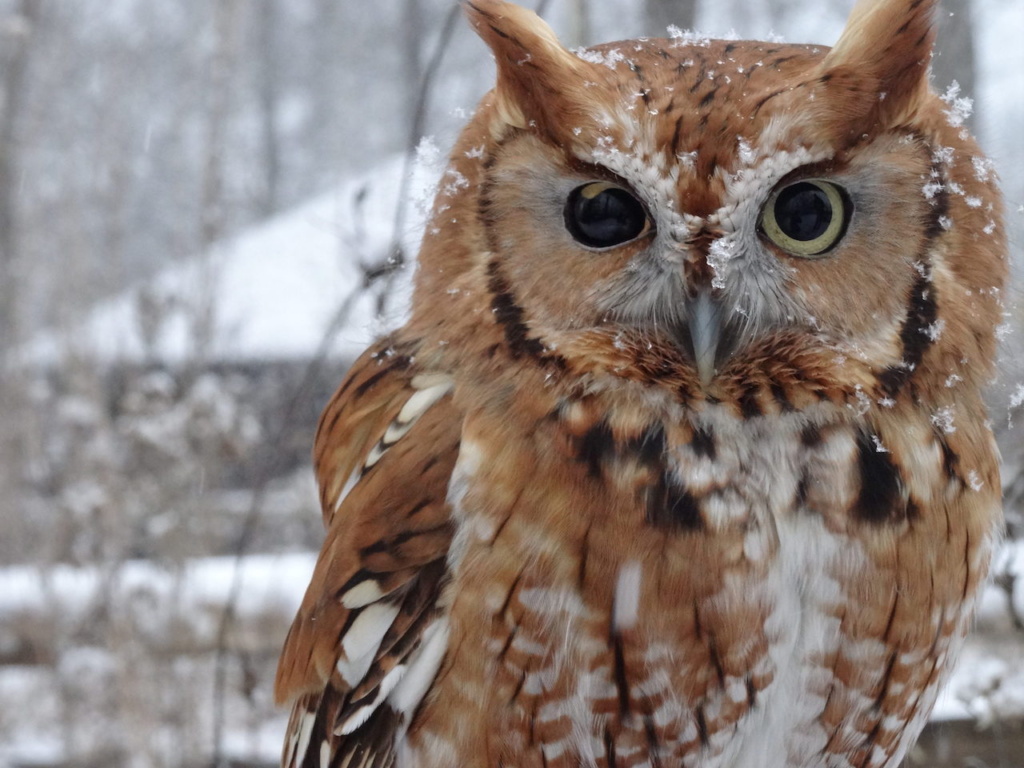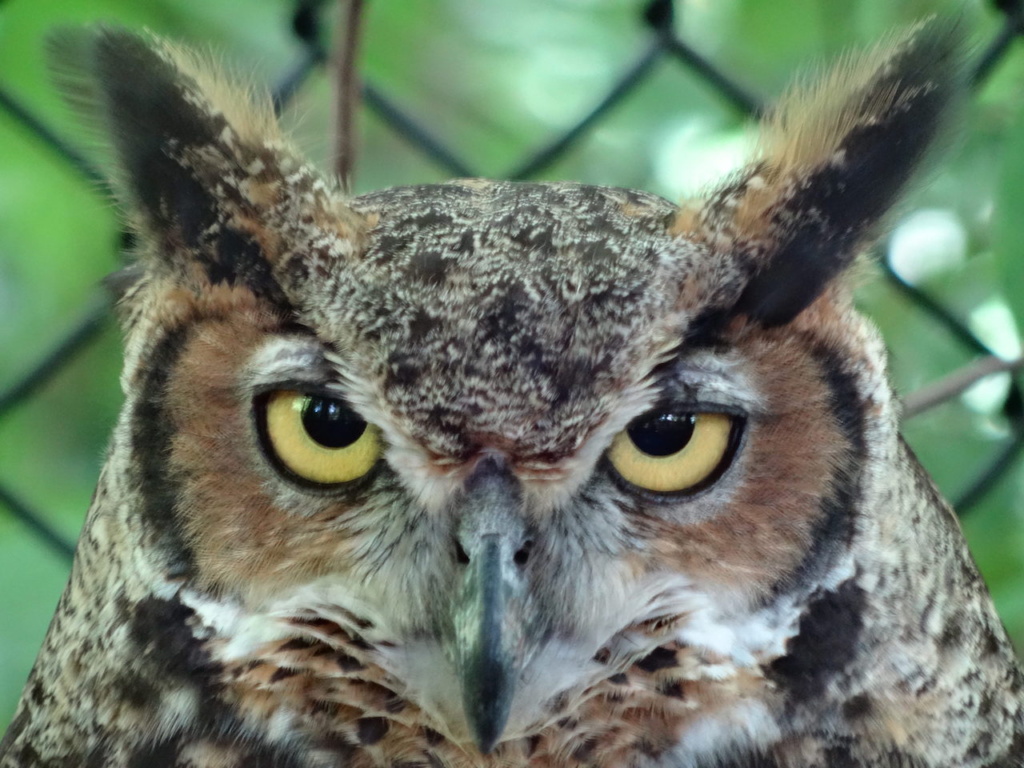(Editor’s Note: John Pollpeter, lead naturalist at the Woodlands Nature Station at Land Between the Lakes, spoke recently with Tracy Ross of WKMS about the four types of owls commonly found in Western Kentucky and Tennessee. Although they’re not quite as friendly as Hedwig, all of these owls play critical roles in this region’s ecosystem.)
“We’re very fortunate here in western Kentucky and Tennessee … we have four very prominent owl species,” Pollpeter begins. “One of the most common people often find here is the Barred Owl. It gets its name because of its vertical striping on its belly that helps it blend in the woods. I often hear it in my house near the park here in Murray. They’re the most common owl that we have here.
“You can also find around town, and especially in rural areas, the little Screech Owl, which is one of our smallest owls that we have here. The name is not really the best thing to describe it. It doesn’t actually screech, it whinnies like a horse,” Pollpeter explains. “When Europeans came here, they often would name a lot of the animals they saw as things that looked familiar to them in Europe, so they named the Screech Owl after an owl that was over in France.

“The largest owl that we have is the Great Horned Owl. I’ve also heard those in many cities and urban areas. They often call this one the tiger of the sky. The reason they say this is because it eats two hundred other animals that are around us. It’s one of the few predators of eagles, particularly baby eagles. It’s a pretty bad dude as far as a predator goes — pretty efficient.
“The last one is a little more rare,” Pollpeter continues. “It’s a species of concern that we have here in Kentucky, and that’s the barn owl. We do have quite a few of them in the countryside around Murray and western Tennessee and southern Illinois. You’re going to find these … near farm fields. They’re mousers. Their populations are very low, and the Kentucky Fish and Wildlife have put some special emphasis in studying them.
“(Owls) are a marvel of evolution. They are super predators. Their adaptations that they have make them very efficient hunters. Whether it’s their eyesight, their hearing, their claws, their ability to fly silently — they have so many different adaptations to allow them to do their job very well,” Pollpeter says.
“For instance,” he continues, “their wings and their feathers are fringed. When they fly, nobody can hear them. They have silent flight. They’re the original stealth bomber. Their claws are in the shape of an ‘x,’ and that gives them one extra bit of grip when they’re grabbing something on the ground in the middle of the night.
“One of the most interesting things that they have is asymmetrical hearing. With most species of owls, one (ear) is located above their eye, and the other one’s located below their eye. What that does is help them triangulate to figure out where that mouse is. So they have a lot better precision in being able to hunt that mouse or that flying squirrel or that lizard or that snake.”
For those worried about local owls scooping up pets from the backyard, Pollpeter says there’s little cause for worry.
“Owls are going to attack what’s easy. An owl is not going to attack anything that’s bigger than itself normally, except maybe a Great Horned Owl. They can only pick up things about half their size. Most puppies and kittens are well above that. Great Horned Owls do have the capability to kill things larger than itself, but usually this is their number one food item, which is skunks. They’re the number one predator of skunks.” Poll-peter says that while it’s a large owl grabbing a small pet isn’t entirely unheard of, it’s in no way common.

“They’re a great, important part of our ecosystem. When you have certain owls in your area, you can definitely tell the health of your ecosystem because they have very specific requirements and large needs. If you have a Great Horned Owl, then you know you have some large, mature trees and good prey base — lots of squirrels and other animals. Owls are efficient in helping us keep down some of the animals that might develop into a nuisance or pests, like skunks or rats or mice.”
So, are all of these owls really as smart as their reputation might suggest? Pollpeter says that their assumed intelligence comes from their hyper-developed predatory skills.
“Predators have to be pretty smart to figure out moves they’re going to make,” Pollpeter says. “As far as brain capacity, they don’t have a very large brain. In fact, most of their skull is filled with their eyes. If we had eyes the same size as they do in their head, our eyes would be the size of two softballs. There’s not a lot of room to be able to have a giant brain like we have. In nature, you don’t necessarily have to be the biggest brain to be the smartest animal. You just need to have the most efficiently-working brain, and that’s what owls (have).”
Pollpeter concludes his LBL Wildlife Report with a word on domesticating these big-eyed, small-brained super-hunters.
“In Europe, some people may keep owls in falconry type situations, but they’re not an animal that can be tamed or domesticated. In the U.S., there are laws against that. We try to dissuade people from keeping owls because they’re complicated. I will say as a person who keeps and takes care of owls here at the Nature Station, they are also messy. They leave a lot of poo, and they also have pellets, which means they regurgitate the bones and the fur of the animals they eat and throw it on the ground. That also makes it a little bit more difficult to care for.”
For more information on the Woodlands Nature Station or Land Between the Lakes, visit their website.





